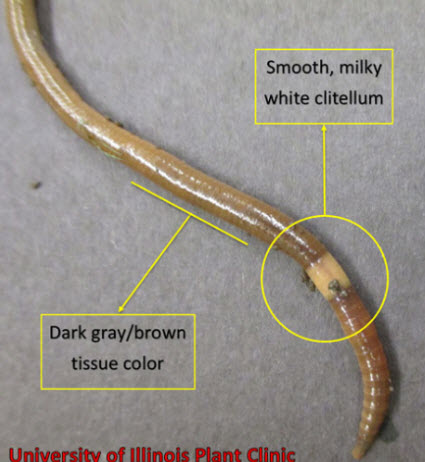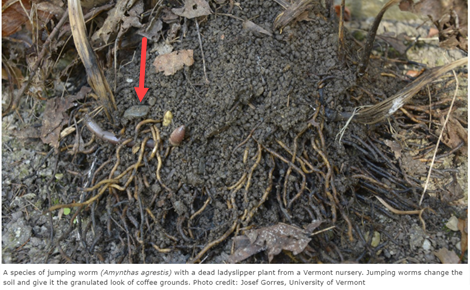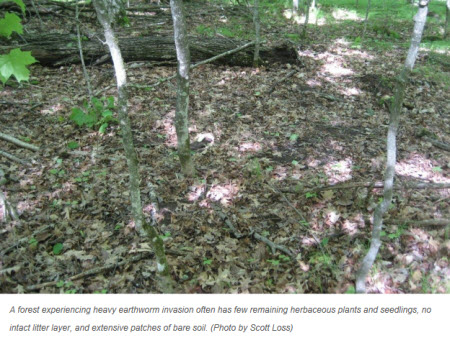Click below to listen to my 2 min. Garden Bite radio show: Jumping worm warning!
Seriously… that’s the headline from the MN DNR. They’re cautioning gardeners and anglers to be on the lookout for invasive jumping worms. Who had THAT for 2020? Actually I have a Garden Bite from 2013 on these invasives. They’re more prevalent now

These destructive worms can quickly degrade soils and damage garden plants and lawns. Jumping worms are a relatively new species to our area, they turn good soil into what looks like coffee grounds, making them very destructive to gardens and forests.

Jumping worms are a type of earthworm that looks similar to other common earthworms such as nightcrawlers. They’re called “jumping worms” because they wiggle intensely when disturbed and sometimes appear to be jumping.
No earthworms are native to Minnesota and other northern states. Native to Asia, jumping worms have been confirmed in limited areas of Minnesota since 2006, mainly in the Twin Cities and western suburbs and in Rochester. It’s believed that they were spread throughout North America by people moving potted plants, soil, compost, mulch and fishing bait.
These are not to be trifled with… they can ruin our forests and soils.

They’re a poor choice for bait because they break up into segments.
he first jumping worms were found in Wisconsin in 2013. If you think you’ve seen them, report it to your DNR office. They warn, don’t buy worms advertised as jumping worms, snake worms or crazy worms.
Anglers should dispose of any unwanted bait in the trash. Don’t dump them out. One of my listeners mentioned that I should have made certain to say make sure the worms are dead before disposing of them in the trash. Good point, Margaret! Thanks!
Gardeners keep an eye out if you’ve purchased new mulch, swapped plants with friends and check your muddy shoes!

These worms mature in about 2 months and are asexual, meaning they can procreate all on their own. They drop their cocoons in the soil where it can overwinter.
